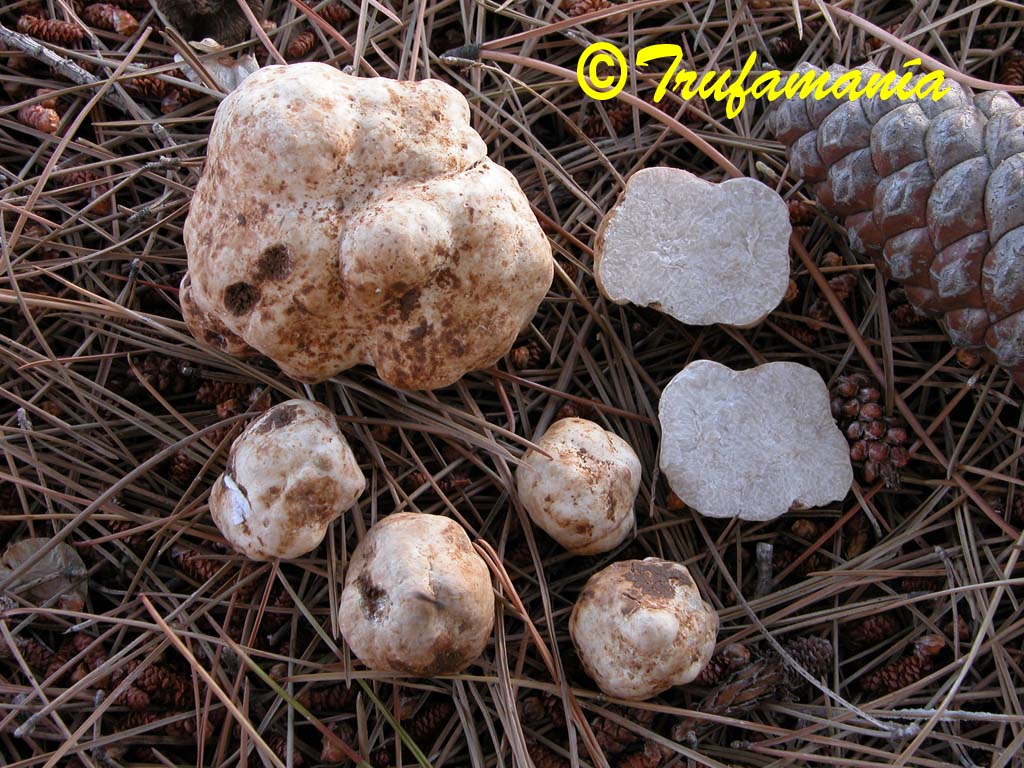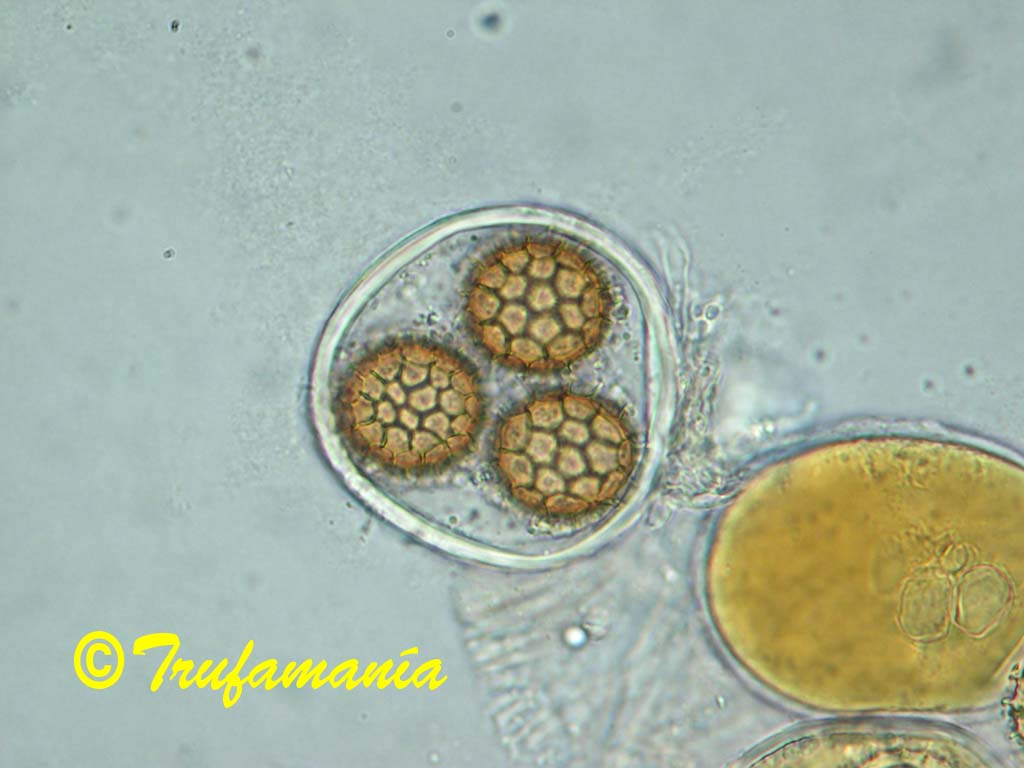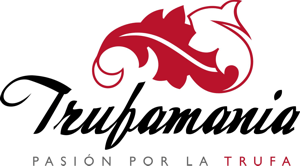TUBER OLIGOSPERMUM (Tul. & C. Tul.) Trappe
Mycotaxon 9(1): 336 (1979)

(Click on the picture to see more images)
Basionym:
Terfezia oligosperma Tulasne et C. Tulasne, Fungi Hypogaei 176, Tab. XXI, fig. XV (1851)
Synonyms:
Delastreopsis oligosperma (Tul et C. Tul.) Mattirolo (1904-05), Boletim da Sociedade Broteriana 21: 95
Lespiaultinia oligosperma (Tul et C. Tul.) Gilkey (1954), North American Flora Series II, part 1: 25
Macroscopic characters:
Ascomata: hypogeous, subglobose or irregular in form, gibbous, lobed, 2-3 (5) cm in size, smooth, pubescent at first, glabrous at maturity, initially whitish, becoming light ochre, brown at maturity, sometimes with reddish patches
Gleba: firm, solid,, whitish at first, then light brown, darker at maturity, marbled with numerous, whitish, branching veins.
Odour: slight and pleasant at first, nutty, similar to other immature truffles, strong, garlicky, acetylenic, unpleasant with age. Detectable by truffle dogs.
Taste: strong, garlicky at maturity.
Habitat
It is described in the literature under pinus and holm oaks in sandy soils, ripening from autumn to spring. We find them in Albacete, from May to June, in clay and limestone soils, under pinus, inhibiting plants growing and making "burns".
Notes:
Tuber oligospermum was originally described as Terfezia by Tulasne brothers, because of having spherical spores. As the asci are 2-4-spored and Terfezia are usually 8-spored, it was called Terfezia oligosperma (few spores). Although spherical spores are not very common in the genus Tuber, the gleba and spores ornamentation of this species match more with the genus Tuber than with the genus Terfezia, so it was recombined by Trappe as Tuber oligospermum in 1979.
Edible when young. Very common in Morocco which exports them in large quantities to Europe for truffle canning industry because they look like Tuber magnatum

(Click on the picture to see more images)
Microscopic characters:
Asci: subglobose to ovate, thick-walled (1-2 µm thick), short-stalked, 70-100 (130) x 60-80 (90) µm excluding stalk, 1-4 (-5)-spored (usually 2-3-spored or 3-4 depending on collections).
Ascospores: 25-46 x 25-40 µm excluding ornament, size variable depending on number of spores in the ascus, Q range = 1,00-1,15, globose to broadly ellipsoid, yellow, translucent, ornamented with a regular reticulum with polygonal meshes 4-5 (-8) µm high, 4-7 across width of spore.
Peridium: 150-250 µm thick, composed of agglutinated, interwoven, hyaline hyphae, covered with hairs in young specimens. Hairs 50-150 µm long, thick-walled, tapered, hyaline, septate.
Notes: Although spores are described in the literature as globose, ellipsoid spores are quite often.
| Antonio Rodríguez trufamania@gmail.com antonio@trufamania.com |



